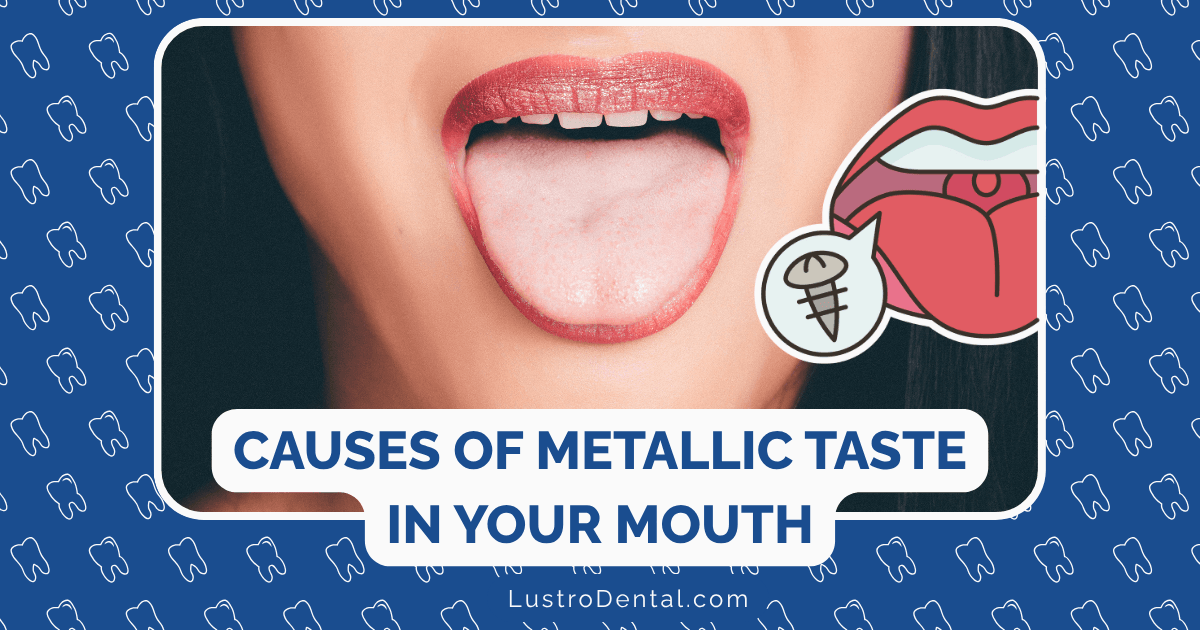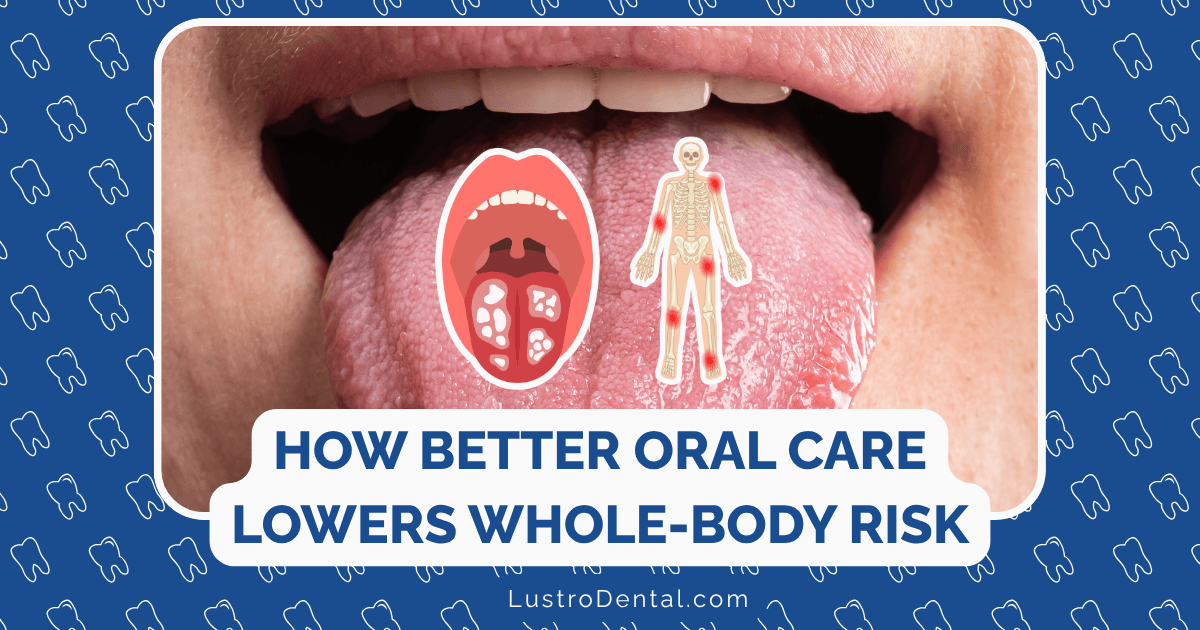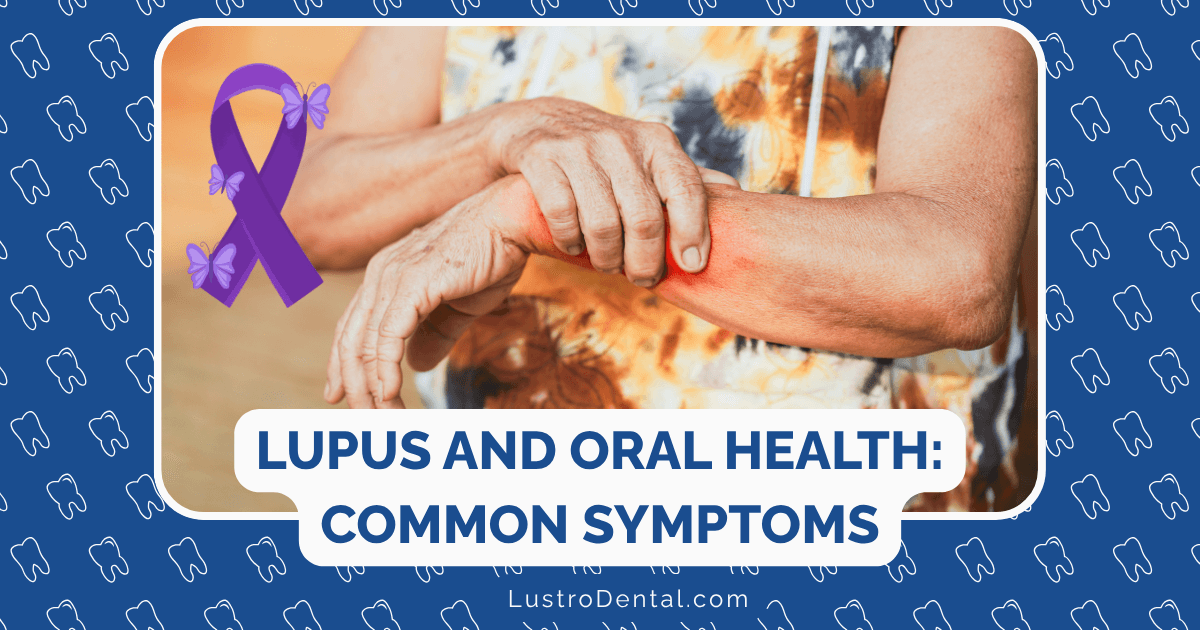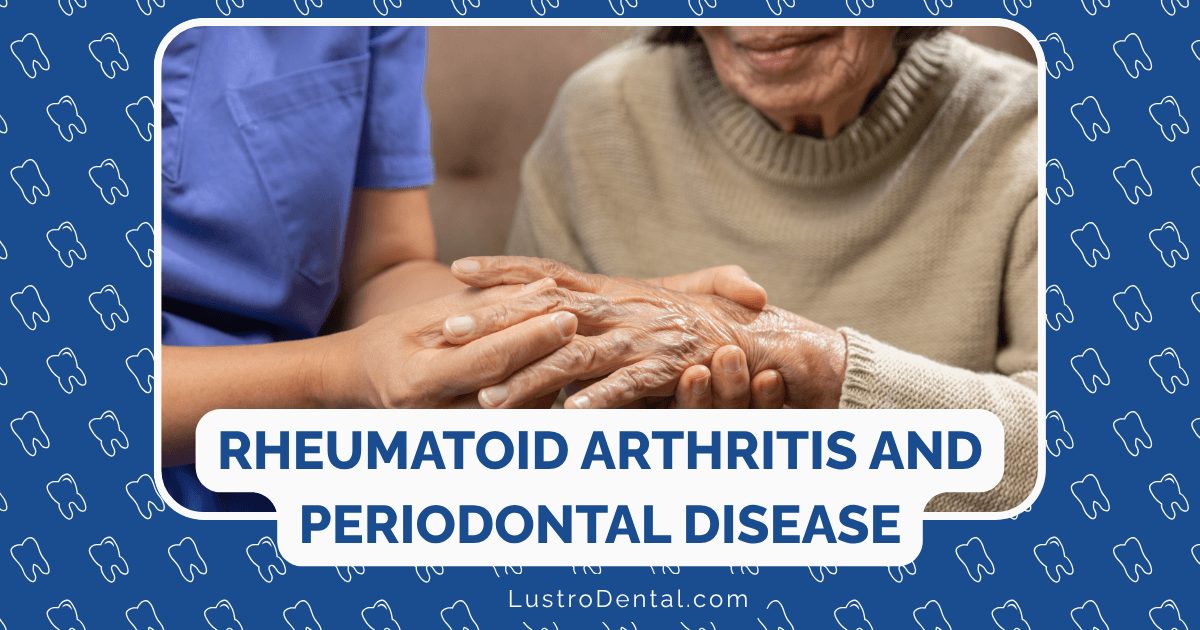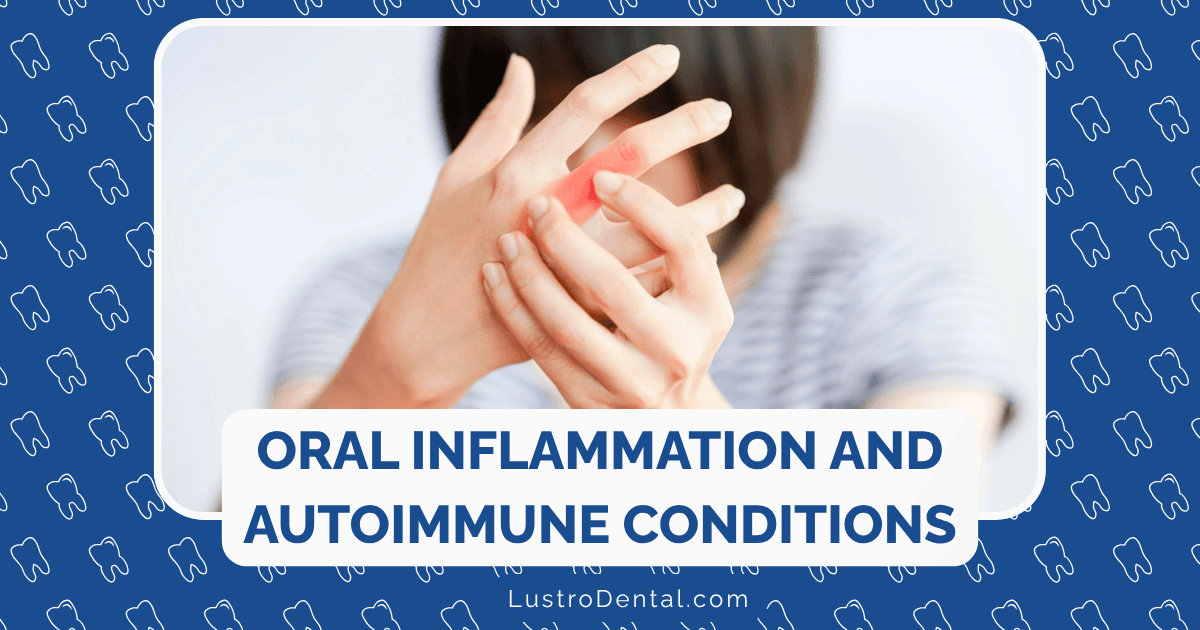Dental Considerations for Patients with Type 1 and Type 2 Diabetes
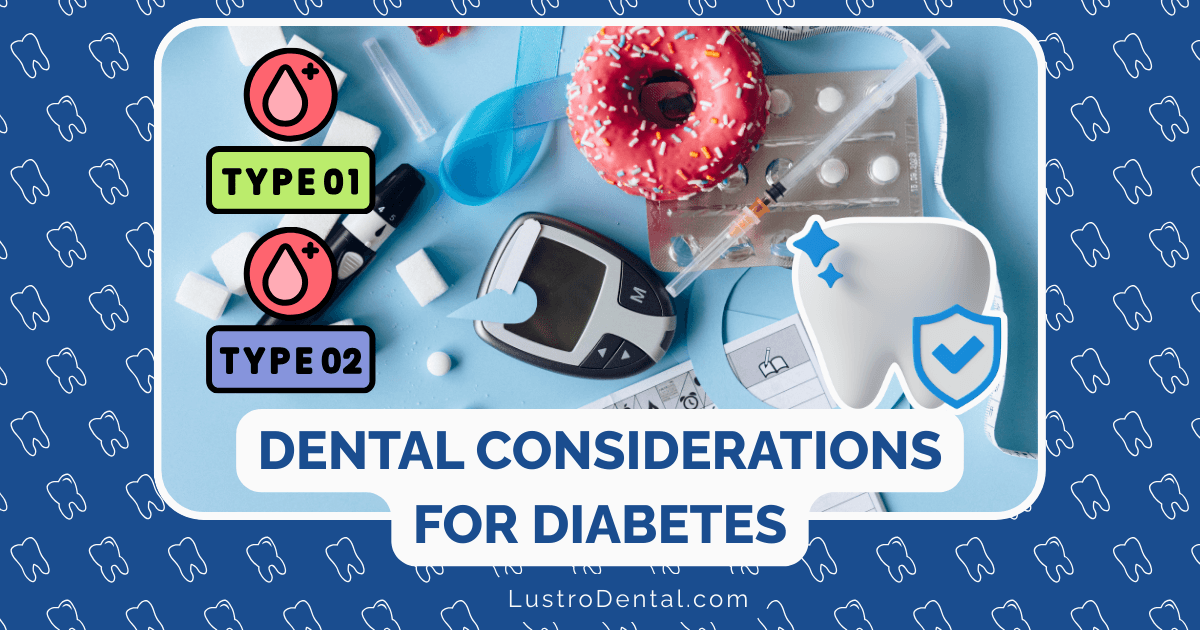
Diabetes and oral health share a complex, bidirectional relationship that requires special attention from both patients and healthcare providers. With over 30 million Americans living with diabetes and many more undiagnosed, understanding the specific dental considerations for both Type 1 and Type 2 diabetes has never been more important.
The American Diabetes Association’s 2025 Standards of Care now includes a dedicated section on dental care, highlighting its critical role in diabetes management. This recognition underscores what many healthcare professionals have long observed: proper dental care is not just about maintaining a healthy smile—it’s an essential component of comprehensive diabetes management.
Understanding the Differences: Type 1 vs. Type 2 Diabetes
Before diving into dental considerations, let’s clarify the key differences between Type 1 and Type 2 diabetes, as they influence dental care approaches.
Type 1 Diabetes
- Accounts for 5-10% of all diabetes cases
- Results from autoimmune destruction of pancreatic beta cells
- Leads to absolute insulin deficiency
- Usually diagnosed in childhood or adolescence, though it can occur at any age
- Requires insulin therapy for survival
- Often presents with rapid symptom onset and diabetic ketoacidosis (DKA)
Type 2 Diabetes
- Accounts for 85-90% of all diabetes cases
- Characterized by insulin resistance and progressive insulin secretion defect
- Often associated with obesity and sedentary lifestyle
- Usually develops gradually, with symptoms appearing over years
- May be managed with lifestyle modifications, oral medications, and sometimes insulin
- Less likely to present with DKA, but can develop hyperglycemic hyperosmolar state (HHS)
Dr. Sarah Johnson, endocrinologist at Mayo Clinic, explains: “The fundamental difference between Type 1 and Type 2 diabetes lies in their underlying pathophysiology. This affects not only how we manage blood glucose but also how we approach dental care for these patients.”
Common Oral Health Complications in Diabetes
Both Type 1 and Type 2 diabetes can lead to similar oral health complications, though the risk and severity often correlate with glycemic control rather than diabetes type.
1. Periodontal Disease
“Periodontal disease is the sixth complication of diabetes,” notes Dr. Michael Chen, periodontist at the University of California. “Patients with diabetes are three times more likely to develop severe gum disease compared to those without diabetes.”
The risk is particularly high when blood glucose is poorly controlled, as hyperglycemia impairs immune function and promotes inflammation. This affects both Type 1 and Type 2 patients, though those with longer disease duration may face greater challenges.
2. Xerostomia (Dry Mouth)
Diabetes can reduce saliva production, leading to dry mouth. This condition is problematic because saliva helps neutralize acids, wash away food particles, and prevent infection.
“Dry mouth isn’t just uncomfortable—it significantly increases the risk for cavities and oral infections,” explains Dr. Elizabeth Wong, dental specialist with expertise in diabetes care. “Patients with Type 1 diabetes may experience this earlier in their disease course due to the often more dramatic blood glucose fluctuations.”
3. Delayed Wound Healing
Both Type 1 and Type 2 diabetes can impair wound healing after dental procedures. This is due to:
- Microvascular changes that reduce blood flow to tissues
- Impaired immune function
- Altered collagen metabolism
- Higher susceptibility to infection
This consideration is particularly important for surgical procedures like extractions and implant placements.
4. Oral Infections
Patients with diabetes have an increased susceptibility to fungal and bacterial infections in the oral cavity, including:
- Candidiasis (thrush)
- Oral bacterial infections
- Mucosal lesions
“Type 1 patients, especially those diagnosed in childhood, may have longer exposure to hyperglycemia over their lifetime, potentially increasing their cumulative risk for these complications,” notes Dr. Johnson.
5. Burning Mouth Syndrome
This painful condition characterized by burning sensations in the mouth occurs more frequently in patients with diabetes, particularly those with peripheral neuropathy.
Specific Dental Considerations for Type 1 Diabetes
Patients with Type 1 diabetes require some specific considerations in the dental setting:
1. Hypoglycemia Risk Management
“The risk of hypoglycemia during dental procedures is generally higher in Type 1 diabetes patients,” explains Dr. Robert Thompson, dental surgeon specializing in medically complex patients. “This is due to their absolute insulin dependence and often more brittle glucose control.”
Key considerations include:
- Schedule morning appointments when endogenous cortisol levels are higher
- Avoid scheduling during peak insulin activity to minimize hypoglycemia risk
- Ensure patients have eaten normally before appointments
- Have glucose monitoring equipment and fast-acting carbohydrates available
- Train staff to recognize and manage hypoglycemic events
2. Insulin Therapy Coordination
Dental procedures, especially those requiring fasting or altering normal eating patterns, may necessitate insulin dose adjustments.
According to the 2025 Standards of Care in Diabetes, “Recommendation 4.16 emphasizes the coordination between medical and dental teams to adjust glucose-lowering medications before and after dental procedures.”
For Type 1 patients, this often means:
- Consulting with the patient’s endocrinologist before major dental procedures
- Creating a specific plan for insulin dosing on the day of the procedure
- Considering temporary basal rate adjustments for patients using insulin pumps
- Monitoring blood glucose before, during, and after lengthy procedures
3. Ketosis Monitoring
Type 1 patients are at risk for diabetic ketoacidosis (DKA), which can be triggered by stress, illness, or missed insulin doses.
“For complex or surgical dental procedures, we may recommend checking ketones in addition to blood glucose, especially if the patient has been fasting,” advises Dr. Wong.
4. Continuous Glucose Monitoring Considerations
Many Type 1 patients now use continuous glucose monitoring (CGM) systems, which can be valuable during dental procedures.
“We encourage patients to keep their CGM sensors active during dental visits,” says Dr. Thompson. “This allows for real-time monitoring and early intervention if glucose levels start trending too low or too high.”
Specific Dental Considerations for Type 2 Diabetes
While many considerations overlap with Type 1 diabetes, patients with Type 2 diabetes have some unique needs:
1. Medication Timing and Adjustments
Type 2 diabetes is often managed with a variety of medications, each with different considerations:
- Metformin: Generally doesn’t cause hypoglycemia but may need adjustment if fasting is required
- Sulfonylureas: Can cause hypoglycemia and may need to be reduced or held before procedures
- GLP-1 Receptor Agonists: May slow gastric emptying and affect post-procedure nutrition
- SGLT-2 Inhibitors: May need to be temporarily discontinued before major procedures due to dehydration risk
The 2025 Standards of Care provides specific guidance on adjusting these medications around dental procedures, emphasizing individualized approaches based on the patient’s overall health status.
2. Obesity Considerations
Many Type 2 diabetes patients also have obesity, which may require adaptations in the dental setting:
- Special dental chairs or accommodations
- Positioning considerations to prevent airway obstruction
- Careful medication dosing that accounts for body weight
3. Comorbidity Management
Type 2 diabetes often occurs alongside other conditions that affect dental care:
- Hypertension: Blood pressure monitoring before procedures
- Cardiovascular disease: Potential anticoagulant use requiring bleeding risk assessment
- Sleep apnea: Considerations for sedation and positioning
“The complexity of Type 2 diabetes often lies in managing multiple comorbidities simultaneously,” notes Dr. Chen. “This requires a comprehensive approach to dental care that considers the patient’s entire health profile.”
4. Implant Considerations
Dental implants have become a common tooth replacement option, but special considerations apply for Type 2 diabetes patients:
- HbA1c values should be assessed before implant placement
- Patients with well-controlled diabetes (HbA1c < 7%) generally have implant success rates comparable to non-diabetic patients
- Poorly controlled diabetes may increase implant failure risk
- Extended healing periods may be necessary
According to a 2025 study in the Journal of Dental Research, “Implant survival rates at 3 years for well-controlled Type 2 diabetes patients approach 95%, compared to 98% in non-diabetic patients, but drop to below 80% in poorly controlled diabetes.”
Dental Treatment Planning and Timing
Proper planning is essential for safe and effective dental care in all diabetes patients:
1. Appointment Scheduling
- Morning appointments are generally preferred for all diabetes patients
- Two-hour post-meal timing is optimal to avoid peak insulin activity
- Shorter appointments may be preferable to minimize stress and allow for regular meals
2. Pre-Procedure Assessment
Before any dental procedure, especially surgical interventions, assessment should include:
- Recent HbA1c levels: Ideally below 7% for elective procedures
- Current medication regimen: Timing, dosages, and potential adjustments
- Blood glucose monitoring: Check levels before beginning treatment
- Consultation with physician: For complex cases or poorly controlled diabetes
3. Surgical Considerations
For invasive dental procedures:
- Antibiotic prophylaxis: May be considered for poorly controlled diabetes
- Wound closure techniques: Meticulous attention to promote optimal healing
- Post-operative instructions: Modified to account for delayed healing potential
- Follow-up schedule: More frequent monitoring may be necessary
Dr. Thompson emphasizes, “The 2025 dental care guidelines stress that patients with well-controlled diabetes can safely undergo most dental procedures. However, elective treatments should be postponed for those with HbA1c levels consistently above 9% until better control is achieved.”
Preventive Strategies and Home Care
Prevention is particularly important for diabetes patients due to their higher risk for oral complications:
1. Enhanced Oral Hygiene Regimen
- Brushing: At least twice daily with fluoride toothpaste
- Flossing: Daily to remove interdental plaque
- Antimicrobial mouth rinses: May be recommended to reduce bacterial load
- Tongue cleaning: To reduce oral bacteria
2. Regular Dental Visits
The 2025 Standards of Care explicitly recommends that “individuals with diabetes should have a dental exam at least once per year” (Recommendation 4.15).
However, many dental professionals suggest more frequent intervals:
- Every 3-4 months for patients with existing periodontal disease
- Every 6 months for those with well-controlled diabetes without periodontal issues
3. Dry Mouth Management
For patients experiencing xerostomia:
- Sugar-free gum or mints to stimulate saliva production
- Alcohol-free mouth rinses designed for dry mouth
- Saliva substitutes when natural stimulation is insufficient
- Adequate hydration throughout the day
- Humidifier use at night
4. Diet Considerations
Dietary advice should balance diabetes management and oral health:
- Limit sugary foods and beverages that contribute to both hyperglycemia and tooth decay
- Choose tooth-friendly snacks like cheese, nuts, and crunchy vegetables
- Rinse after meals when brushing isn’t possible
- Consider the timing of carbohydrate consumption in relation to medication schedule
The Role of the Dental Professional in Diabetes Management
Dental professionals play a crucial role beyond just treating oral conditions:
1. Screening and Detection
“Dentists are in a unique position to identify undiagnosed diabetes,” says Dr. Wong. “Oral manifestations like multiple periodontal abscesses, severe periodontitis, or frequent oral infections should trigger diabetes screening recommendations.”
Some dental offices now offer chairside HbA1c testing or refer patients with suspicious findings for medical evaluation.
2. Collaborative Care
The 2025 Standards of Care emphasizes the importance of coordination between dental and medical teams. This includes:
- Shared electronic health records when possible
- Regular communication about patient status and treatment plans
- Joint management of complex cases
- Mutual education about diabetes and oral health connections
3. Patient Education
Dental professionals should educate diabetes patients about:
- The bidirectional relationship between diabetes and oral health
- How improving oral health may positively impact glycemic control
- The importance of disclosing all diabetes medications and recent blood glucose readings
- Signs of oral complications that warrant immediate attention
Emergency Situations in the Dental Office
Dental professionals must be prepared to manage diabetes-related emergencies:
1. Hypoglycemia Management
- Recognition: Sweating, shakiness, confusion, anxiety
- Immediate action: Administer 15-20 grams of fast-acting carbohydrate (juice, glucose tablets)
- Recheck: Blood glucose after 15 minutes
- Repeat treatment: If blood glucose remains below 70 mg/dL
- Follow-up: With complex carbohydrate and protein once stabilized
2. Hyperglycemia Protocol
- Recognition: Excessive thirst, frequent urination, fatigue, blurred vision
- Assessment: Check blood glucose and ketones if available
- Hydration: Provide sugar-free fluids
- Medical consultation: For blood glucose above 250 mg/dL with symptoms
- Postponement: Of elective procedures if severe hyperglycemia is present
3. Emergency Kit Requirements
Every dental office treating diabetes patients should have:
- Glucose monitoring equipment
- Fast-acting carbohydrate sources
- Emergency contact information for patients’ physicians
- Staff trained in recognizing and managing diabetes emergencies
Future Directions in Dental Care for Diabetes Patients
The field continues to evolve with promising developments on the horizon:
1. Point-of-Care Testing
Advances in chairside testing are making it easier to assess:
- HbA1c levels
- Inflammatory markers related to both periodontal disease and diabetes
- Salivary glucose levels as a non-invasive monitoring method
2. Telehealth Integration
“The integration of dental care into telehealth platforms is allowing for better coordination between diabetes care providers and dentists,” notes Dr. Chen. “This is particularly valuable for patients in rural areas or those with mobility limitations.”
3. Personalized Treatment Protocols
Research is moving toward more individualized approaches based on:
- Genetic risk factors
- Microbiome profiles
- Inflammatory response patterns
- Diabetes type, duration, and control status
4. Novel Therapies
Emerging treatments show promise for addressing the oral-diabetes connection:
- Host modulation therapies to reduce inflammatory response
- Targeted antimicrobials for diabetes-specific oral pathogens
- Regenerative techniques to address diabetes-related tissue damage
Conclusion: A Comprehensive Approach
Managing dental health in patients with diabetes—whether Type 1 or Type 2—requires a comprehensive, individualized approach that considers the unique aspects of each condition while addressing their shared complications.
The 2025 Standards of Care’s inclusion of specific dental recommendations represents an important step forward in recognizing oral health as an integral component of diabetes management. By understanding and implementing these considerations, both dental professionals and patients can work together to improve outcomes and quality of life.
As Dr. Johnson concludes, “The mouth is not separate from the rest of the body, and nowhere is this more evident than in diabetes care. When we address oral health as part of comprehensive diabetes management, everyone benefits—the patient, the dental team, and the medical team.”
Are you living with diabetes and have questions about your dental care? Share your experiences or concerns in the comments below!


